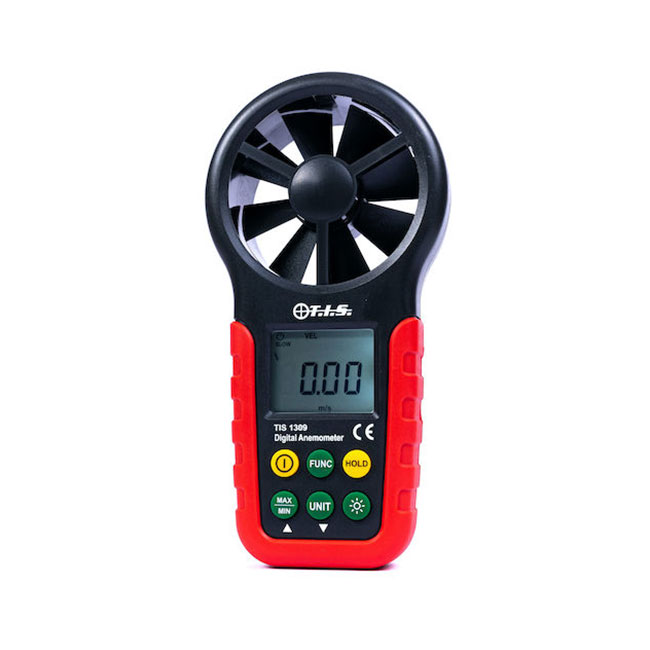Weather reporting is obviously a popular pastime and has become much more sophisticated as time has evolved. This requires the measurement of wind velocity and direction, and today uses an anemometer, and therefore, an anemometer is a device used to measure wind speed and wind direction. It can usually provide a reading in several different units of measure, such as miles per hour, kilometres per hour, metres per second, knots, nautical miles per hour and feet per minute. In terms of airflow, some anemometers can measure in cfm, cmm and cms.
How does an anemometer work?
There are three common types of anemometer and these all work slightly differently.
- A mechanical anemometer – this is perhaps the most common version and uses a type of surface to measure the wind pressure when the wind is blown against it. This surface is usually a cup or a type of propeller, which are fixed in a series around a wheel. One of the surfaces will have a magnet attached to it, and when the magnet makes a rotation it will activate a switch. The switch makes a reading and from this you can measure the wind speed. This is perhaps the simplest form of anemometer.
- A vane anemometer - these are also known as wind vanes, and follow a similar principal to the mechanical anemometer but use a vertical vane instead of cups or a propeller. The vane will rotate in the wind and provide readings to measure the wind speed, while the angle of the vane will also provide information about wind direction. This is thought to be a more sensitive method of measuring wind speed than the mechanical version.
- Ultrasonic anemometer – this method uses disturbances and soundwaves to calculate wind speed. The unit will emit a soundwave and measures the time it takes for the soundwave to travel to and from a target, or a known point. This time is able to be calculated to provide a wind speed reading.
One of the challenges to anemometers, particularly mechanical and vane anemometers, is extremes in temperature and high winds. These can affect the accuracy and reliability of the readings obtained, so many anemometers will have a maximum wind speed measurement, above which it cannot guaranteed accuracy, and the same with minimum and maximum temperatures. This is because high winds can cause dust and debris to interfere with the instrument, while in stormy conditions this could also include moisture.
Who would use an anemometer?
There are quite a wide range of uses for an anemometer, from the occasional hobbyist to the scientific expert. From a health and safety point of view, anemometers are critical in measuring wind speeds where someone might be expected to work at height, and therefore the instrument is used to ensure it is safe to do so. Also, where a building has been installed with ventilation fans, an anemometer will be used to ensure that ventilation volumes are adequate, both upon installation and also on a routine basis as part of a scheduled maintenance regime.
Anyone interested in the weather can use an anemometer because they are relatively simple to use, but people who fly drones, planes, helicopters, parachutes, or enjoy hang-gliding or sailing boats will need to gauge wind speeds for safety reasons.
Anemometers are also used in weather stations and by meteorologists to study weather patterns and to understand how wind influences temperature and humidity in certain areas. This helps us to develop accurate weather forecasts also. Physicists use anemometers to study how the air moves, while various engineering and aviation projects will rely on wind measurement. Finally, anemometers are also used in renewable energy studies, whereby the feasibility of wind energy projects will depend on the recording of wind data.
What does an anemometer look like?
A typical anemometer today is a handheld instrument with a digital screen, which allows for a quick, clear and easy-to-read result, and also one which is more accurate. Most anemometers on the market are mechanical anemometers with a digital screen, such as the TIS 1309 digital anemometer supplied by Test Instrument Solutions. This has a wind speed measuring range for each required unit of measure and with a +/- level of accuracy. This type of anemometer is compact, lightweight, mobile and rugged for use in all different environments.
Please note that this section is for information purposes only. Anyone using equipment referred to in this section must be suitably qualified and/or experienced within the respective field. If in doubt before use, please consult a qualified electrician or engineer & thoroughly read all instruction booklets.